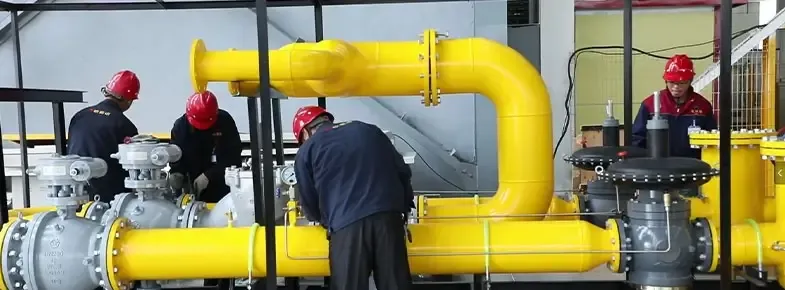
Dec . 13, 2024 17:52
Back to list
منظم ضغط الغاز الطبيعي
The Importance of Natural Gas Pressure Regulators
Natural gas is a vital energy source used for heating, cooking, and electricity generation. It is essential to ensure the safe and efficient delivery of natural gas from production sites to consumers. One crucial component in this supply chain is the natural gas pressure regulator. This device plays a critical role in maintaining the pressure levels necessary for safe operation and efficient delivery.
What is a Natural Gas Pressure Regulator?
A natural gas pressure regulator is a mechanical device used to control the pressure of natural gas flowing through pipelines. It ensures that the gas is delivered at a consistent and safe pressure, regardless of fluctuations in the supply line. The regulator automatically adjusts the pressure by restricting or allowing the flow of gas, thus providing a steady output pressure to end-users.
How Does It Work?
The working mechanism of a natural gas pressure regulator involves a few key components the diaphragm, spring, and valve. The diaphragm senses the pressure of the gas flowing through the regulator. When the gas pressure is higher than the desired level, the diaphragm pushes against the spring, causing the valve to close and reduce the flow of gas. Conversely, if the pressure drops below the desired level, the spring pushes the valve open, allowing more gas to pass through.
This automatic adjustment ensures that consumers receive a consistent pressure level, which is crucial for the safe operation of appliances such as furnaces, water heaters, and stoves. Proper regulation of gas pressure also prevents potential hazards such as gas leaks, explosions, and equipment damage.
Types of Natural Gas Pressure Regulators
.
1. First-Stage Regulators These are used in the primary distribution of natural gas, reducing the high pressure from the transmission pipelines to a more manageable level. They are typically found in large distribution networks and industrial settings.
منظم ضغط الغاز الطبيعي

2. Second-Stage Regulators These are designed to further lower the pressure to a level suitable for residential or commercial use. They are installed closer to the end-user, ensuring that the gas delivered to homes and businesses is safe and usable.
Importance in Energy Efficiency
Natural gas pressure regulators contribute significantly to energy efficiency. By maintaining optimal pressure levels, these devices ensure that appliances operate effectively, consuming the right amount of energy. This optimization not only enhances performance but also reduces wastage and lowers utility bills.
Furthermore, regulating pressure helps in minimizing the risk of gas leaks, which can lead to significant safety hazards and environmental concerns. By preventing such occurrences, pressure regulators play a critical role in promoting a sustainable energy future.
Maintenance and Safety Considerations
Regular maintenance of natural gas pressure regulators is imperative for their effective operation. Users should routinely check for signs of wear and tear, and any unusual fluctuations in gas pressure should be investigated immediately. Additionally, local utilities often have guidelines for the installation and maintenance of these devices to ensure compliance with safety regulations.
In the event of a gas leak or emergency situation, it is crucial for users to know how to shut off the gas supply and contact professionals for assistance. Understanding the role of pressure regulators in these systems helps users appreciate their importance and the need for regular inspection.
Conclusion
Natural gas pressure regulators are essential devices that ensure the safe and efficient distribution of natural gas. They not only maintain optimal pressure levels for residential and commercial use but also contribute to energy efficiency and safety. With proper maintenance and understanding of their function, users can maximize the benefits of natural gas while minimizing risks. As the demand for cleaner energy sources continues to grow, the importance of reliable and well-functioning natural gas infrastructure, including pressure regulators, will be crucial in supporting a sustainable energy future.
Latest news
-
Safety Valve Spring-Loaded Design Overpressure ProtectionNewsJul.25,2025
-
Precision Voltage Regulator AC5 Accuracy Grade PerformanceNewsJul.25,2025
-
Natural Gas Pressure Regulating Skid Industrial Pipeline ApplicationsNewsJul.25,2025
-
Natural Gas Filter Stainless Steel Mesh Element DesignNewsJul.25,2025
-
Gas Pressure Regulator Valve Direct-Acting Spring-Loaded DesignNewsJul.25,2025
-
Decompression Equipment Multi-Stage Heat Exchange System DesignNewsJul.25,2025

